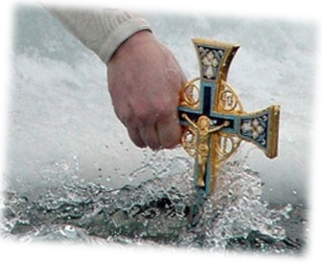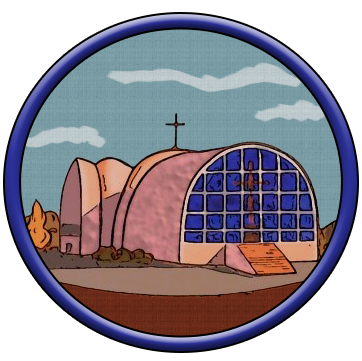Feast Day Traditions
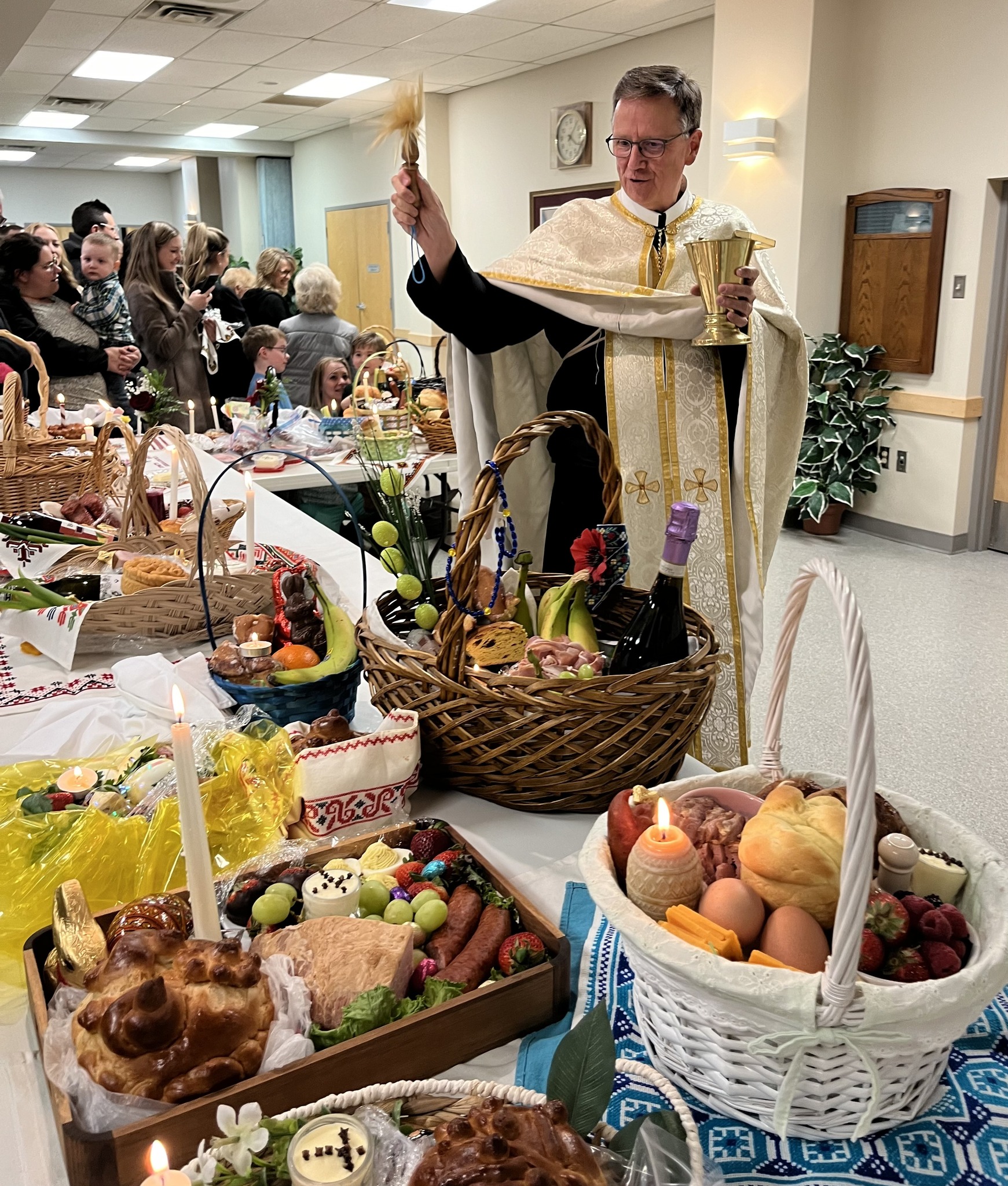
Adorning of Crosses - September 14 and Third Sunday of the Great Fast
ADORNING OF CROSSES
Feast of the Exaltation of the Precious and Life Giving Cross – September 14
Veneration of the Holy Cross – Third Sunday of the Great Fast
The Cross is the symbol of victory-Christ’s victory over the devil and over sin and death. As a remembrance of this, crosses are crowned or decorated with laurels, garlands and flowers.
This special commemoration of the cross occurs twice during the Liturgical Year: on the Feast of the Exaltation of the Precious and Life Giving Cross celebrated on September 14 and for the Veneration of the Holy Cross on the Third Sunday of the Great Fast. The decorated cross is placed on the tetrapod for the week so that the faithful can come to venerate the cross.
“To Your Cross O Master, we bow in veneration, and we glorify Your Holy Resurrection.”
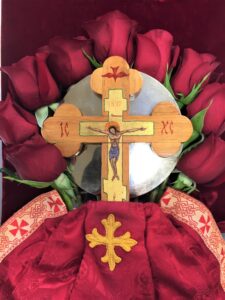
Feast of the Exaltation of the Precious and Life Giving Cross
Anointing with Holy Oil - on Major Feast Days
MYROVANIA: ANOINTING WITH HOLY OIL
on Major Feast Days
On major Feast days, the faithful are anointed with holy oil and receive a piece of bread that was blessed during the Lytia at Great Vespers on the evening before the feast.
This anointing takes place after the Divine Liturgy when the faithful approach to venerate the icon of the feast. The priest standing near the tetrapod, blesses the faithful by anointing their foreheads with the sign of the cross. After the veneration of the icon of the feast and the anointing, the faithful receive a piece of the bread blessed at the Lytia which, if they have faith will bring them many graces. 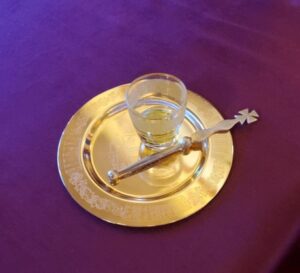
The tracing of the sign of the cross on the forehead, indicates that all grace come to us through the power of Christ, Who continues to be present with His Church. The priest greets each person with “Christ is among us!” And the faithful, in turn expressing their faith in Christ’s presence answer, “He is, and He shall be.” (During the Christmas season, the priest greets the faithful with the words, “Christ is born!” and the people respond with, “Glorify Him!” During the Easter season, the customary greeting used is “Christ is Risen!” and the response is “Indeed He is Risen!”)
The blessed bread is a symbol of Christ, the “Living Bread”, Who gives us both physical and spiritual life. Consuming this bread “with faith” we express our trust in Christ that He will provide us with the necessary food for our body (referring to the multiplication of the bread in the prayer of blessing) and all the graces needed for the salvation of our immortal soul.
Adapted with appreciation from: Mirovanije: Anointing with Holy Oil
Blessing of Candles - February 2 - Encounter of Our Lord
BLESSING OF CANDLES
The Encounter of Our Lord – February 2
By the hand of Father Luke Dingman, www.lukedingman.com
In obedience to the Old Law, the Lord Jesus, the first born, was presented in the Temple by His Blesses Mother and His foster father on the fortieth day after His birth. Joseph and Mary brought the Child Jesus into the Temple along with a humble sacrifice of young pigeons as a sign of thanksgiving.
In Jerusalem at the time there lived a man, Simeon, who was just and devout. According to tradition, Simeon had been visited by an angel of the Lord who foretold him that he would not see death before seeing the Messiah born of the Virgin. Led by the Holy Spirit into the Temple on the day that the holy family brought the Child Jesus to fulfill the law, Simeon took the Child into his arms and blessed God by saying: “Lord, now let Your servant depart in peace, according to Your word; for my eyes have seen Your salvation, which You have prepared before the face of all people, a light of revelation to the gentiles, and the glory of Your people Israel” (Luke 2:29-32).
This is another ‘epiphany’ celebration insofar as the Christ Child is revealed as the Messiah through the canticle and the words of Simeon and the testimony of Anna, the prophetess who was also in the Temple that day.
Christ is the light of the nations, hence the blessing of candles on this day. The faithful take the candles home and light them when they need Christ’s intervention such as in times of illness or bad weather. These candles are also lit before icons and used by priests when they visit the elderly or inform with the Holy Eucharist.
Blessing of Flowers - August 15 - Dormition of the Mother of God
BLESSING OF FLOWERS
Feast of the Dormition of the Mother of God – August 15
In the Byzantine Rite, there is an ancient custom of bringing herbs and flowers to be blessed after the Divine Liturgy on the Feast of the Dormition (Assumption in the Roman Catholic Rite). According to traditional belief, after Mary’s assumption, her tomb was filled with a “heavenly fragrance” and flowers. The herbs, used as natural medicine, are blessed in commemoration of the numerous healing and extraordinary graces bestowed on the pilgrims at Mary’s tomb.
Blessing of Fruit - August 6 - Feast of the Transfiguration
Blessing of Fruit
Feast of the Transfiguration – August 6
By the hand of Father Luke Dingman, www.lukedingman.com
The feast of the Transfiguration of our Lord is celebrated late in summer when the fruits of the earth reach maturity. From the earliest times in the Eastern Church, fruit is blessed on this day to thank God for the first-fruits of the earth, and to express our gratitude to God for His generosity. This custom was adopted by the Christian Church from the Jewish custom of bringing fruit to the Temple of the Lord: “You shall carry the first fruits of the corn of your ground to the house of the Lord your God” (Ex. 23:19).
Over the centuries countries adapted what first fruits were to be offered. Greece blessed grapes and wheat. In Ukraine, grapes were often replaced by such fruits as apples, plums and pears. The grape, as the prayer of blessing reminds us, is transformed into wine and then, at the Divine Liturgy, into the blood of our Saviour. When eating blessed grapes, we are reminded of the transforming power of the Holy Spirit within each of us!
Sources:
UCREC Saskatoon
A Guide for the Domestic Church by the Diocese of Newton Office of Educational Services
Blessing of Graves - during the season of Pentecost
Blessing of Graves
during the season of Pentecost
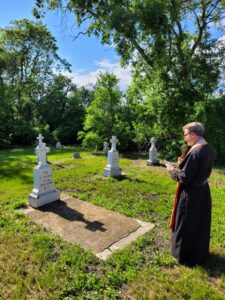 On Pentecost Saturday we commemorate all the departed souls since Adam. By the descent of the Holy Spirit, celebrated on Pentecost Sunday, God’s plan of salvation was completed. Since the will of God is the all people be saved, the day before this Feast, is set aside as the day of prayer for all the deceased – so that they be included in the salutary work of Christ.
On Pentecost Saturday we commemorate all the departed souls since Adam. By the descent of the Holy Spirit, celebrated on Pentecost Sunday, God’s plan of salvation was completed. Since the will of God is the all people be saved, the day before this Feast, is set aside as the day of prayer for all the deceased – so that they be included in the salutary work of Christ.
It is tradition during this time, that the faithful visit cemeteries, celebrate memorial services called panakhydas, pray at individual graves and have a priest bless the graves with holy water.
Blessing of graves, however, can be done anytime.
Blessing of Homes- during the season of Theophany
Blessing of Homes
during the season of Theophany
The Feast of Theophany commemorates the Baptism of our Lord in the Jordan River by John the Baptist. When Jesus descended into the depths of the river, it wasn’t He who needed purification, but rather the water itself. By purifying the waters all of creation was once again sanctified by God. In memory of this event, the Great Water Blessing occurs after the Divine Liturgy celebrating the Feast of Theophany. 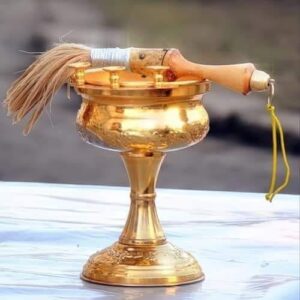 The central sign of God’s sanctification of all things through the Feast of Theophany, is the blessing of homes and holds a deeply spiritual significance. In the days following the Feast, priests visit our homes to pray for our families, and to bless our surroundings with the holy water. This home blessing represents a renewal and reorientation of our lives towards Christ. By blessing our homes, they become temples of the Holy Spirit for the fulfillment of the will of our Heavenly Father. (Blessing something is to set it aside for a higher purpose – God’s purpose.)
The central sign of God’s sanctification of all things through the Feast of Theophany, is the blessing of homes and holds a deeply spiritual significance. In the days following the Feast, priests visit our homes to pray for our families, and to bless our surroundings with the holy water. This home blessing represents a renewal and reorientation of our lives towards Christ. By blessing our homes, they become temples of the Holy Spirit for the fulfillment of the will of our Heavenly Father. (Blessing something is to set it aside for a higher purpose – God’s purpose.)
The blessing of homes is a beautiful tradition that reminds us of God’s presence, sanctifies our living spaces, and renews our commitment to a life centered on Christ!
Blessing of Pussy Willows - Palm Sunday
Blessing of Pussy Willows
Entry into Jerusalem – Palm Sunday
On Willow or Palm Sunday we recall the triumphant entry of Jesus into Jerusalem before His passion. This day is considered one of the twelve Major Feasts of the liturgical year in the Byzantine Rite. It is always celebrated on the Sunday before Easter and includes the blessing of willow branches. The blessing of branches usually takes place before or after the Divine Liturgy. The blessed branches are then distributed to the faithful as they come for anointing after the Liturgy.
It is not uncommon to see Ukrainians striking one another on the shoulder on Willow Sunday with the willow branch and reciting the verse: “It is not I but the willow branch which strikes you to remind you that in seven days is the Great Day!”
Depending on the country or region, a variety of branches (palms, willows, flowers) are blessed for this celebration. Pussy willows seem to express well the liturgical symbolism of Palm Sunday. During the winter the willow tree seems to be dead. Yet, with the coming of spring, it sprouts and gives a sign of life. The willow branches bring to mind the wood of the Tree of the Cross, while the buds, a sign of new life, remind us of our own glorious resurrection. The blessed branches should be carried home as a sacramental, as a visible symbol of Christ’s presence. They should be entwined on a crucifix or used to decorate as icon. They serve as a “sign of salvation,” and a “pledge of protection and blessing” during the coming year as invoked by the second Prayer of Blessing.
In some regions they place these branches into the hands of the deceased making them joyously ready to meet Jesus on the day of Resurrection. Let us then “come with branches and praise Christ the Lord!”(From Matins of Palm Sunday). “Hosanna! Hosanna to the Son of David! Blessed is He Who comes in the Name of the Lord! Hosanna in the highest!”(Mt. 21:9)
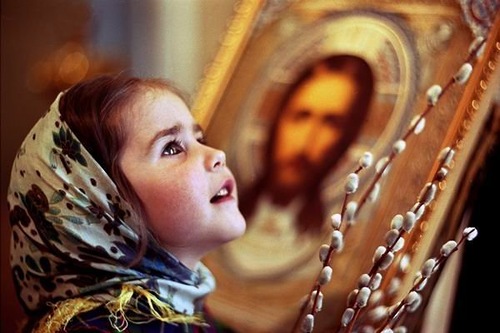
Photo: Y.Kostygov / Expo.Pravoslavie.ru
Blessing of Water - January 6 - Feast of Theophany
Blessing of Water
Feast of Theophany – January 6
By the hand of Father Luke Dingman, www.lukedingman.com
One of the greatest feasts of the Eastern Church is Theophany or Epiphany. In the Byzantine Ukrainian Catholic Church, we celebrate this feast on the eve of Theophany (January 5) and on January 6. A whole series of traditions practiced by Ukrainians for many centuries are linked with this major feast day. First and foremost among the traditions is the Solemn Blessing of Holy Water. Wherever circumstances permit, this solemn blessing of water takes place by a river, lake, or pond. However, if none of these are near, the liturgical rites of the blessing are held in church.
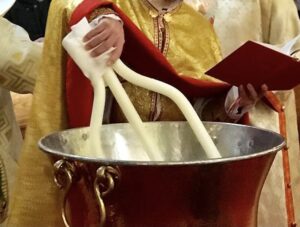 This blessing commemorates our Lord’s baptism by John the Baptist in the Jordan River when the Blessed Trinity was revealed to the people for the first time. As Jesus was standing in the water, the Holy Spirit in the appearance of a dove was seen above Him, while the voice of God the Father was heard to say, “This is my beloved Son in Whom I am well pleased!”
This blessing commemorates our Lord’s baptism by John the Baptist in the Jordan River when the Blessed Trinity was revealed to the people for the first time. As Jesus was standing in the water, the Holy Spirit in the appearance of a dove was seen above Him, while the voice of God the Father was heard to say, “This is my beloved Son in Whom I am well pleased!”
During the ceremony the incensing of the water signifies the descent of the Holy Spirit. The three candles that are immersed and snuffed out in the water, remind us that through Christ’s baptism our sins are destroyed and forgiven.
The many benefits we derive from holy water are suitably expressed in the inspiring prayers of the blessing itself. In these prayers, the priest asks God to endow the water with the power to sanctify us, to forgive sins, to cure the sick, to purify the souls and bodies of those who draw and drink this water, to alleviate their suffering, to sanctify their homes and to protect them from the incursions of the devil and from other afflictions. It is for this reason that the faithful take this holy water home. It is fitting and right to have the home blessed by a priest or deacon. However, the head of the household can sprinkle all the rooms in the home as well as the surrounding yard. The remaining water is kept for future use.
Among its many uses, holy water may be used to bless oneself or others before undertaking a long journey, or we may bless our children with it before putting them to bed to protect them from possible harm. Sick people may drink some of the holy water or be sprinkled with it, humbly asking God for the grace of recovery. In times of grave temptation or family difficulties and afflictions, the use of holy water often brings strength and consolation. It is evident, therefore, that in many events in our lives, holy water, as a sign of and petition for God’s grace, can be very beneficial if taken and used with God’s assistance.
Blessing of (Wheat) Bread, Wine, and Oil - eve of every major feast day
Blessing of (Wheat), Bread, Wine and Oil
On the eve of every major feast day
A special procession called the lytia, is part of the Slavic tradition of Byzantine Vespers. It takes place at Great Vespers on the eves of feasts, and sometimes on Saturday evenings as well, and includes the singing of hymns and a litany for the needs of the world.
After the procession (wheat), bread, wine, and oil are blessed:
- Wheat represents the providential care of God in supplying our needs. After the blessing, it may be ground and used for baking.
- Bread and wine represent the staples of life; they are blessed and are distributed to the faithful (the wine may be poured over the bread) to begin the feast.
- Oil (usually olive oil) represents the grace of God; The oil will be used to anoint the faithful.
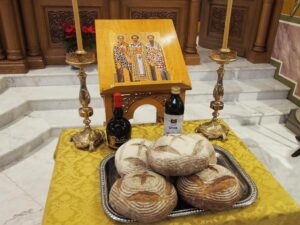
In the blessing (which takes place at the tetrapod), the priest prays:
“Lord Jesus Christ, our God, you blessed the five loaves in the wilderness and fed the five thousand. Likewise bless these loaves, wheat, wine, and oil, and multiply them in this city and throughout your whole world. Sanctify your faithful who will partake of them. For you, yourself, bless and sanctify all things, O Christ our God, and we give glory to you, with your eternal Father, and your all-holy, good, and life-creating Spirit, now and ever and forever.”
The bread and wine are distributed after the dismissal of Vespers or on the following day after the Divine Liturgy, and the blessed oil is used to anoint the faithful. This custom is called “myrovania” (anointing).
Photo by P. A. Chrisanthopoulos
Gift Giving - December 6 - St. Nicholas
Gift Giving
St. Nicholas – December 6
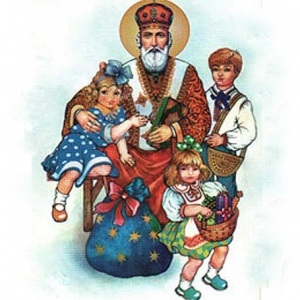 By popular culture, St. Nicholas is perhaps the most closely linked saint to the Christmas season. As Archbishop of Myra, Nicholas was noted for his deeply religious life, his generosity and love of the poor, his battles against heresies, against persecutors of Christians and human injustice. He was ready to help anyone in any situation, regardless of the cost to himself.
By popular culture, St. Nicholas is perhaps the most closely linked saint to the Christmas season. As Archbishop of Myra, Nicholas was noted for his deeply religious life, his generosity and love of the poor, his battles against heresies, against persecutors of Christians and human injustice. He was ready to help anyone in any situation, regardless of the cost to himself.
He was a true shepherd of his people and a model of faith.His life of gift giving and defense of the faith connect with the spirit of Christmas within us. The proximity of his feast day to the feast of the Nativity is an accident of history. Saint days are on the church calendar for the day the saint fell asleep in the Lord. On December 6 we remember St. Nicholas.
This feast day is celebrated during the time of Pylypiwka when we are preparing our hearts to celebrate the birth of our Lord. St. Nicholas shows us the ideal of love, charity, and generosity.
Often on this feast day children put on pageants or Christmas concerts at the end of which St. Nicholas himself makes an appearance. He always has a treat for every child.
In our Ukrainian tradition, we celebrate St. Nicholas, not Santa Claus. Gifts were given only on December 6, not at Christmas, and they were given only to the children. Regardless of when we exchange gifts, and with whom, let us celebrate St. Nicholas’ memory by imitating his goodness, generosity and selfless giving.
Green Holidays - Pentecost
 Green Holidays
Green Holidays
Pentecost – 50 Days after Pascha/Easter
By the hand of Father Luke Dingman, www.lukedingman.com
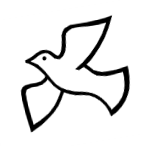 Traditionally, in the Byzantine Rite, Green is the colour associated with Pentecost. The emphasis is always on the life-giving, life -renewing aspect of the Holy Spirit. The Holy Spirit comes to bring new life to all. Churches and homes are often decorated with green boughs and branches to herald the life- giving Spirit.
Traditionally, in the Byzantine Rite, Green is the colour associated with Pentecost. The emphasis is always on the life-giving, life -renewing aspect of the Holy Spirit. The Holy Spirit comes to bring new life to all. Churches and homes are often decorated with green boughs and branches to herald the life- giving Spirit.
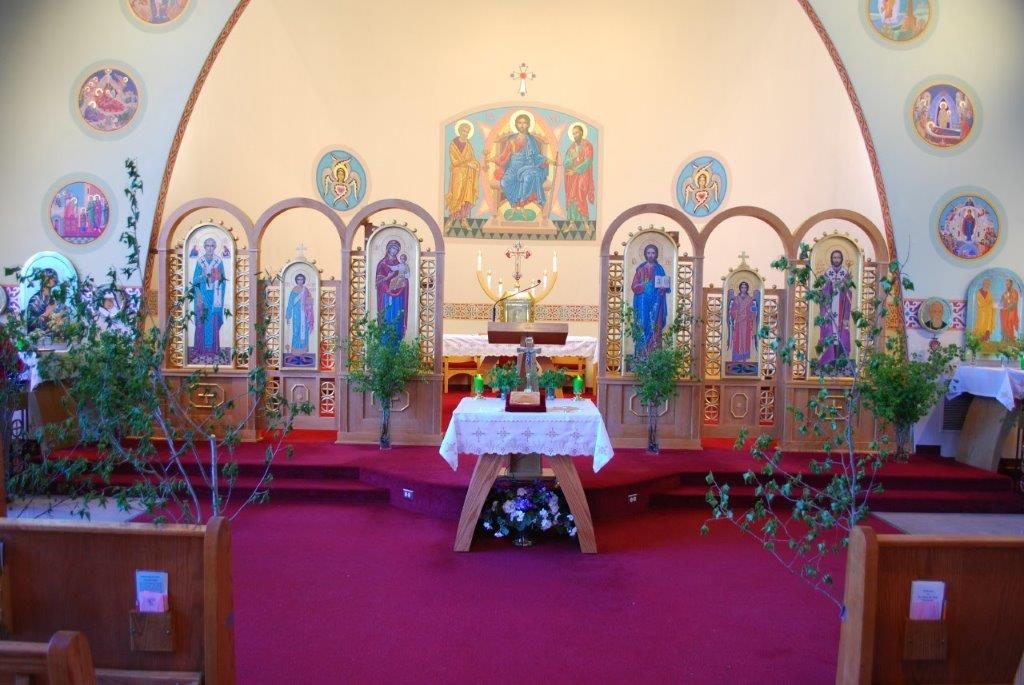
The only time a priest wears green vestments in the Ukrainian Catholic Church is on Pentecost and the week following it. The congregation kneels at the beginning of the Divine Liturgy, on the Feast of Pentecost and during the entire week, and sings the hymn to the Holy Spirit.
Prayer to the Holy Spirit
Heavenly King, Advocate, Spirit of Truth, Who are everywhere present and fill all things,
Treasury of Blessings, Bestower of Life, come and dwell within us; cleanse us of all that defiles us and O Good One, save our souls.
Ukrainian Christmas Traditions
Ukrainian Christmas Traditions
By the hand of Father Luke Dingman, www.lukedingman.com
Ukrainian Christmas Eve traditions are steeped in symbolism. The day itself was designated a fast day in remembrance of the hardships that Mary endured as she and Joseph traveled to Bethlehem. All preparations, both spiritual and physical, during the season of Pylypiwka lead up to this Holy night. The final day of the Christmas fast was a day of anticipation.
All day there was much to do before the special supper, “Sviata Vechera”. In Ukraine, and among those who lived on farms in Canada, care was taken that all animals were fed and given fresh, soft hay. Some of the special foods that were to be eaten that night were saved for the animals also. The animals were treated specially on this night because animals had shared their place of shelter, the stable, with the Holy Family, and had given up their manger for the newborn Christ to sleep in.
In the house, the table and the room were prepared. Hay was strewn under the table and under the tablecloth as a reminder of the humble place of Christ’s birth. A white or embroidered tablecloth was spread on the table and a “Kolach” (a braided bread) was placed in the center. A beeswax candle was put in the middle of the loaf. A lit candle was placed in the window to invite in any homeless stranger. An extra place setting would be on the table for the souls of the dead or for a stranger, should one come to the door.
Later in the day, the father would bring in the “Didukh”, a sheaf of fine grain, and would place it in a place of honour near the icons. As dusk approached, the children would look for the first star, for only when it was spotted could the supper be served. Before sitting down to eat good wishes for all the members of the family were expressed by the father. Prayers were recited and the Nativity Tropar or a carol such as “Boh Predvichny (God Eternal)” was sung.
The meal consisted of twelve meatless dishes to commemorate the twelve apostles. The first dish was always the “kutia”, boiled wheat with honey and poppy seed. The meal then continued with the other eleven dishes. These differed from region to region, but all contained no meat or dairy products as this still was a day of abstinence. After supper, nuts and sometimes candies were scattered in the hay for the children.
Out of respect for their elders, the children would take baskets of food to their grandparents and godparents. Throughout the rest of the evening traditional carols were always sung by all of the family until nearly midnight, when it was time to go to church. All members of the family went to church to attend the Nativity Liturgy, a beautiful celebration of Christ’s birth. The liturgy was preceded by a matin service during which the words “Z namy Boh” (“God is with us”) were repeated over and over again.
Once the liturgy was completed, the families greeted each other with the traditional greeting:“Khrystos Razdayetsia” (“Christ is born”) to which would come the reply, “Slaveete Yoho” (Let us glorify him”). After visiting with friends at church, the families returned to their homes. Now that the fast was broken, the delicious pastries that had been prepared for Christmas might be eaten before the family retired to bed.
The celebration of Christmas started on Christmas Day and continued for three days. Carolers would be sure to start their visits to families in the village, always starting first at the home of the priest. It was considered an honour to be visited by carolers and no one was ever turned away.
The day after Christmas is the Synaxis of the Blessed Virgin Mary. A Synaxis is a feast which commemorates a person associated with the previous day’s feast. This day was to remind us of the important roles of Mary, Christ’s mother and of Joseph, His guardian on earth. This day was also to remind the faithful of the escape of the Holy Family to Egypt, which saved the newborn Christ from the massacre ordered by Herod.
Celebrated on the third day of Christmas is the Feast of Saint Stephen. Stephen was one of the first seven deacons of the church: he was ordained by the Apostles to live a holy life helping the poor, widows, and orphans. He was a great teacher of the Christian faith, and he performed many miracles. Saint Stephen was the first martyr of the Christian faith. He was stoned to death by his persecutors.
UKRAINIAN CHRISTMAS CAROLING TRADITIONS
In the days following Christmas Eve through to the Feast of Jordan (Theophany), it was the custom in Ukraine for groups of carolers to visit homes in their village or town.
Depending on the locality, the group might have consisted of men, youth, young ladies, older children or a mixed group of young adults. Often there would be more than one group that would be visiting friends and relatives, singing carols both old and new, bringing good wishes for the Christmas season and the coming year, and soliciting donations for good causes, such as church or school.
In the old country, the group would first choose a “bereza”, their leader. At each house, the leader would ask the head of the household, “May we carol for you?” The answer, “Prosymo! (Please do!)” was certain to be heard, for each family was honoured to be visited by carolers.
The leader would give directions and start the caroling. Very often the group would carry a homemade Star of Bethlehem (6, 8, or 10-pointed) with a candle within and a picture of the nativity at its center. It would be mounted on a pole and held high. A “vertep” (manger scene) was sometimes carried by one of the members of the group.
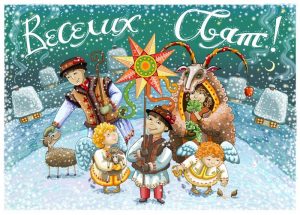 In some areas, the group would dress as angels, shepherds or other characters from the Nativity story. They may have presented a short play or skit about the wondrous Christmas story.
In some areas, the group would dress as angels, shepherds or other characters from the Nativity story. They may have presented a short play or skit about the wondrous Christmas story.
Right after Christmas the carols could be heard, but later around New Year’s Eve, and sometimes until the Eve of Theophany, the carolers would sing “shchedrivky” (songs that express good luck and wishes for a prosperous new year).
Today in Canada, it is still the custom for carolers to visit homes of friends and family. They wish their hosts good fortune and sing the much loved koliadky (carols) which their ancestors did many years ago. These carolers are still rewarded in much the same way by their hosts – with a treat, a warm drink and a donation to the carolers’ cause.
Ukrainian Easter Traditions
Ukrainian Easter Traditions
For Ukrainian Catholics, no other holiday stirs the soul or is so glorious and joyful as that of Easter, when we celebrate the 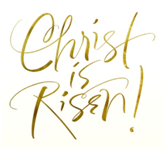 Resurrection of Jesus Christ, Son of God, from the dead. It is a holiday filled with many symbols and rituals.
Resurrection of Jesus Christ, Son of God, from the dead. It is a holiday filled with many symbols and rituals.
The week before Easter is called Holy Week. The days are busy with physical and spiritual cleansing and rebirth. On Thursday evening the Twelve Gospels of Christ’s Passion are read in a special service. On Great Friday, we attend service at 3:00 p.m., the hour of Christ’s crucifixion. To commemorate His death, in procession we carry a plaschynytsia – a shroud that has an icon of the crucified body of Christ. The shroud is carried along with a spear and sponge, and we hear the hollow, heart – breaking nails being pounded into Christ’s hands and feet. After the procession, the shroud is placed in a “tomb” where we approach in extreme humility (usually on our knees) to kiss the wounds of our Lord.
The Resurrection Matins and liturgy was traditionally held in the early morning of Easter Sunday, before the rising of the sun. When the liturgy was ending and the priest said “CHRYSTOS VOSKRES” (Christ is Risen), the doors of the church were opened and the rays of the rising sun would envelop the faithful. One of the more colorful of the Easter traditions is the blessing of the Easter basket. This was traditionally done on Easter Sunday after the liturgy, but now commonly is done on Easter Saturday. The basket traditionally contained a small sample of the following:
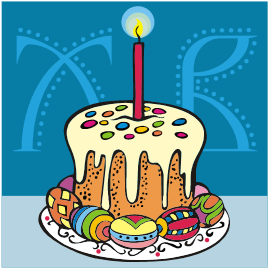 PASKA: This is a rich, decorated bread. It represents Christ, the True Bread of Life. A candle is placed in its center and lit when the priest begins the blessing ceremony.
PASKA: This is a rich, decorated bread. It represents Christ, the True Bread of Life. A candle is placed in its center and lit when the priest begins the blessing ceremony.
BABKA: This is a sweet bread, usually with raisins, that represents the Mother of God.
PYSANKY: Decorated Easter eggs, with designs and colours that are symbolic.
KRASHANKY: Dyed eggs in a variety of colours. Traditionally, there was always a red one to represent our salvation through the blood of Christ.
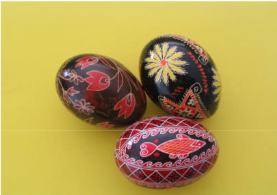 EGGS: Hard boiled and peeled. They represent new life and the Resurrection.
EGGS: Hard boiled and peeled. They represent new life and the Resurrection.
SALT: A small amount. It represents our call to be “salt of the earth” and our duty to others.
BUTTER: The butter represents the goodness of Christ. The cloves, p laced to outline a cross represent the oils and spices used to anoint the body of Christ.
CHEESE: A sweet cheese made by mixing farmer cheese with confectionery sugar, raisins, cinnamon, cloves and nutmeg, represents that we as Christians should practice moderation in everything.
HORSERADISH/BEETS/VINEGAR/SUGAR: The bitterness of horseradish is combined with beets, vinegar, and sugar. The bitterness reminds us of Christ’s bitter suffering. The red of the beets reminds us of His Passion and the blood He shed for us. The vinegar reminds us of the gall He was offered when He was thirsty. The sugar reminds us that Christ’s sufferings and passion are seen in the light of the Resurrection.
KOVBASA/HAM: These rich meats remind us of the richness and joy of the Resurrection. They are also symbols of God’s overabundance and limitless mercy and generosity.
CHOCOLATE: This is a modern addition to the Easter basket. It reminds us to be thankful that our ancestors made sacrifices so that we could have a life in a country where we are free to worship God in the faith that was handed down to us.
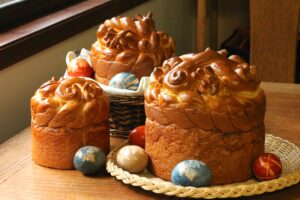
image courtesy of Korena in the Kitchen
Easter dinner includes all of the blessed foods, and might include pyrohy, holubsti, mashed potatoes and gravy, salads, vegetables, headcheese, cakes, cheesecakes and tortes. It is important not to waste any of the blessed food. The crumbs, bones, etc. are buried so that the earth receives blessing from the Resurrection.
Often the Easter festivities included HAHILKY –VESNINKY, ritual spring songs and dances. These group dances, songs and games were meant to entice spring and chase winter away. They also imitated planting and growing of crops, and tried to ensure a bountiful harvest.
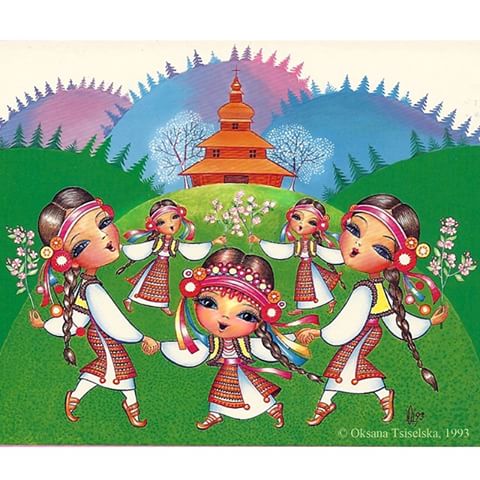
Image courtesy of Oksana Tsiselska
